A Chair For Sellers’ Home
If a furniture maker is to be fascinated by any area of his and her craft, surely chair making is the one. Walk into any building, home, shop opr office and you will find chairs and it is pretty much guaranteed that every chair you see that day will be different in shape, type, colour and material. Most offices no longer have any kind of wooden chair as today’s plastic and metal versions offer full adjustability as a one-size-fits-all replacement. Furthermore, the five pronged wheel type tmeans they can be moved lazily around the desk to office printers, scanners and so on.
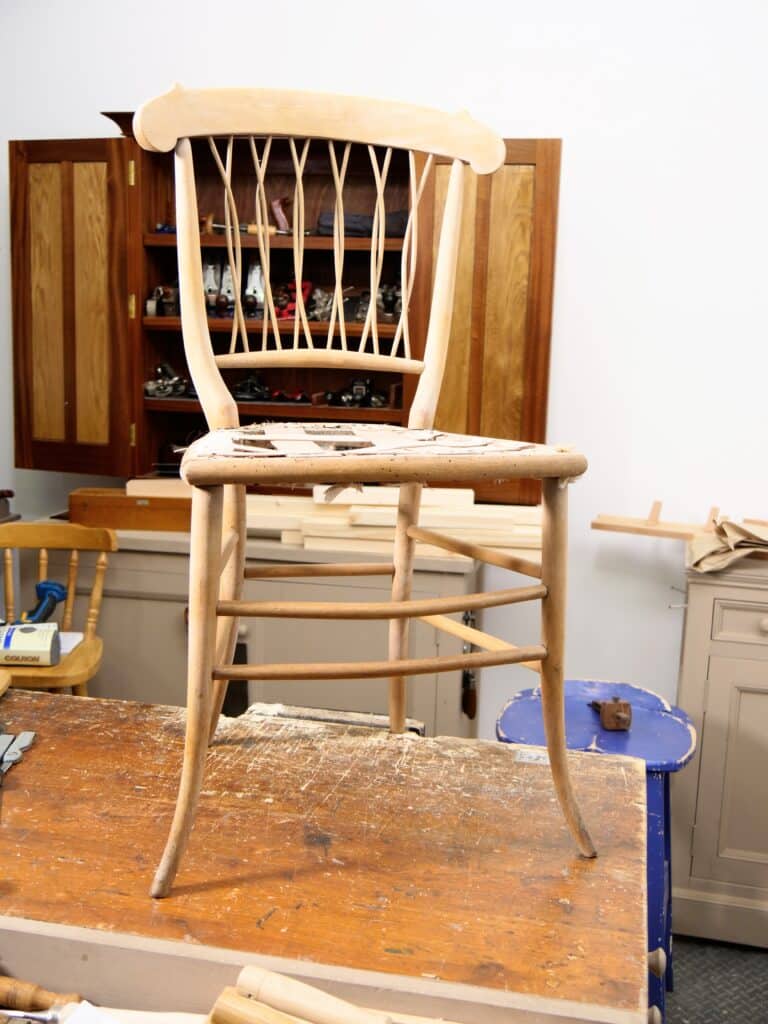
Chairs are complex, four-legged creatures, except the ones built for health-centre waiting rooms, county council offices, colleges and schools, institutions like these. Stick chairs like Windsor’s, Clisset’s and Thonet’s and then, of course, the planest of chairs, Shaker chairs and stick chairs all of which simplified the issues of chairmaking by using mainly bored holes to receive rounded legs, stretchers, side rails or, as in the case of the Thonet chair, screwed-together, more cleverly bent, two-way com
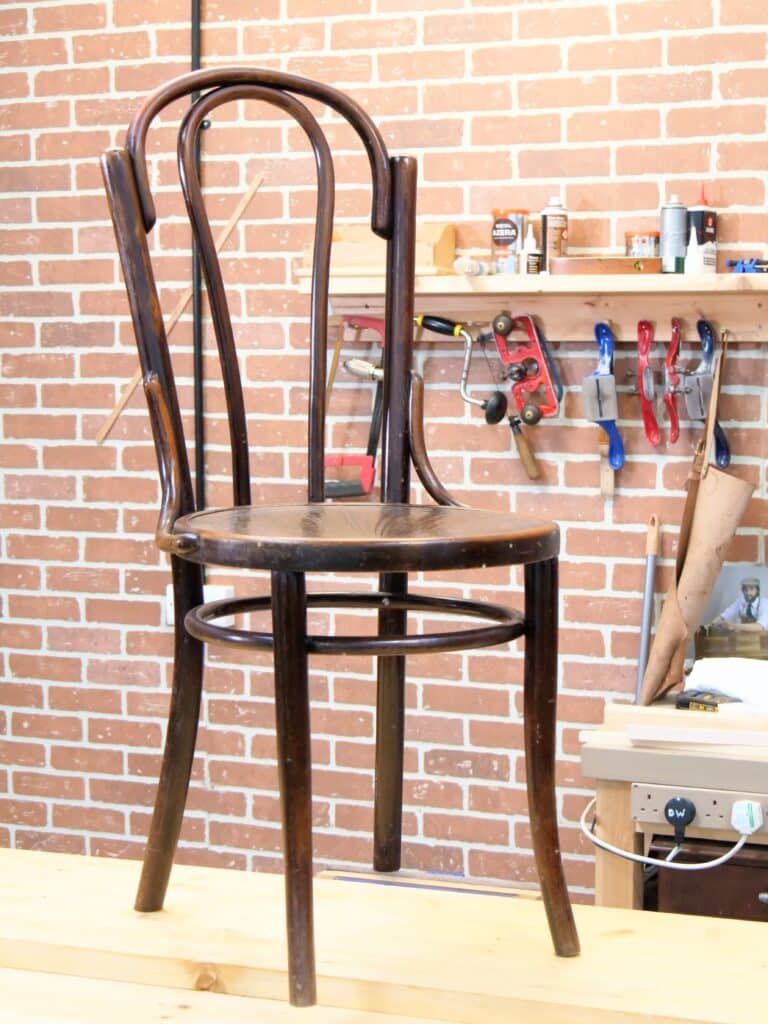
ponents. Having no shoulders to the inserted pieces removed any and all complex angles needed in the shoulders of tenons if indeed you wanted any splayed legs that add stability.
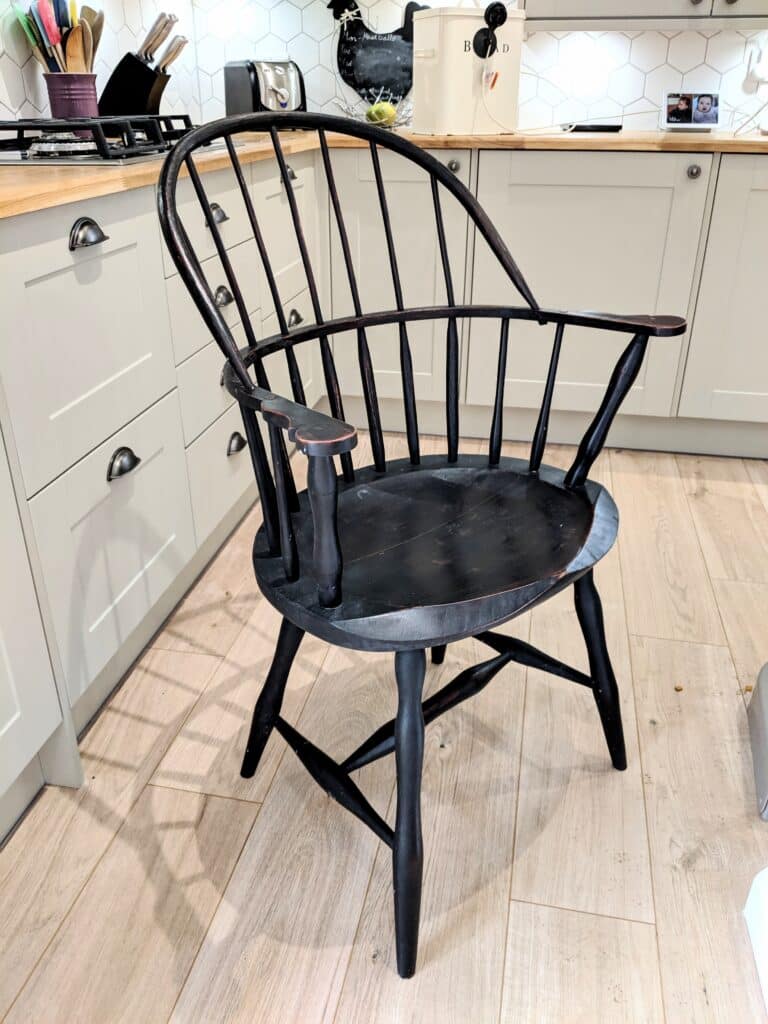
Comparing the so-called Welsh-stick chair to the American Windsor styling is a chalk and cheese comparison. Whereas both are actual styles of chairs, and the principles used in the designs are almost identical. one has the styling of a more country look and the other a lighter weight, less clunky, elegantly refined look.
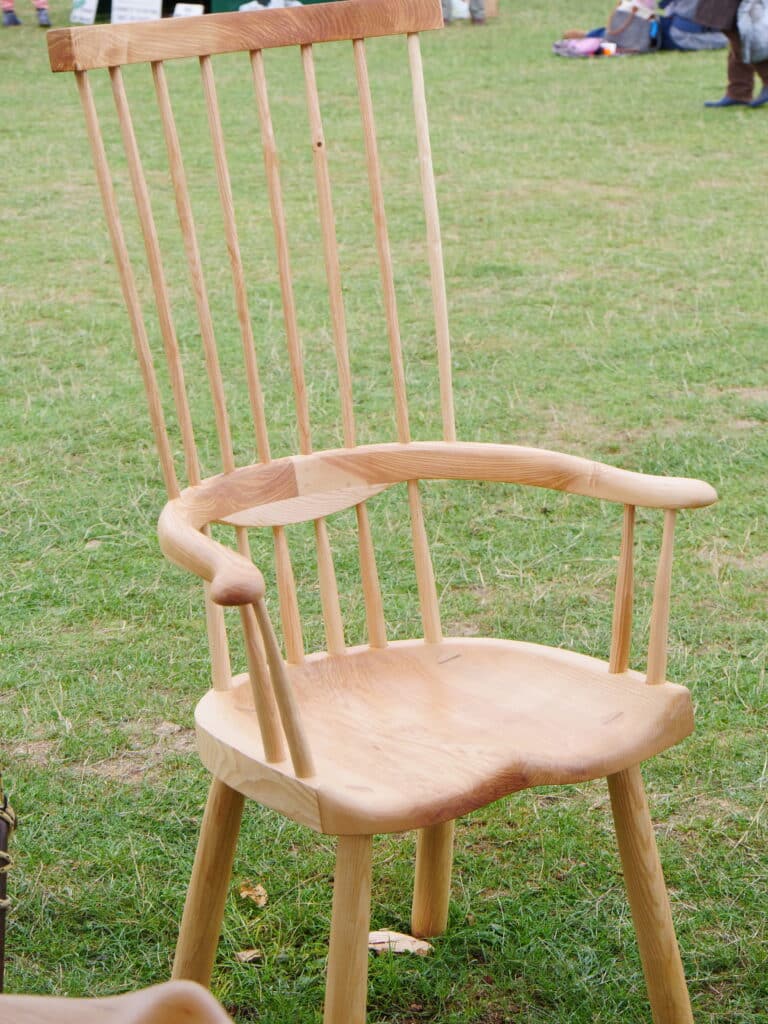
Of course, there is a place for just about any style of chaor an especially when they are well made and made by hand.
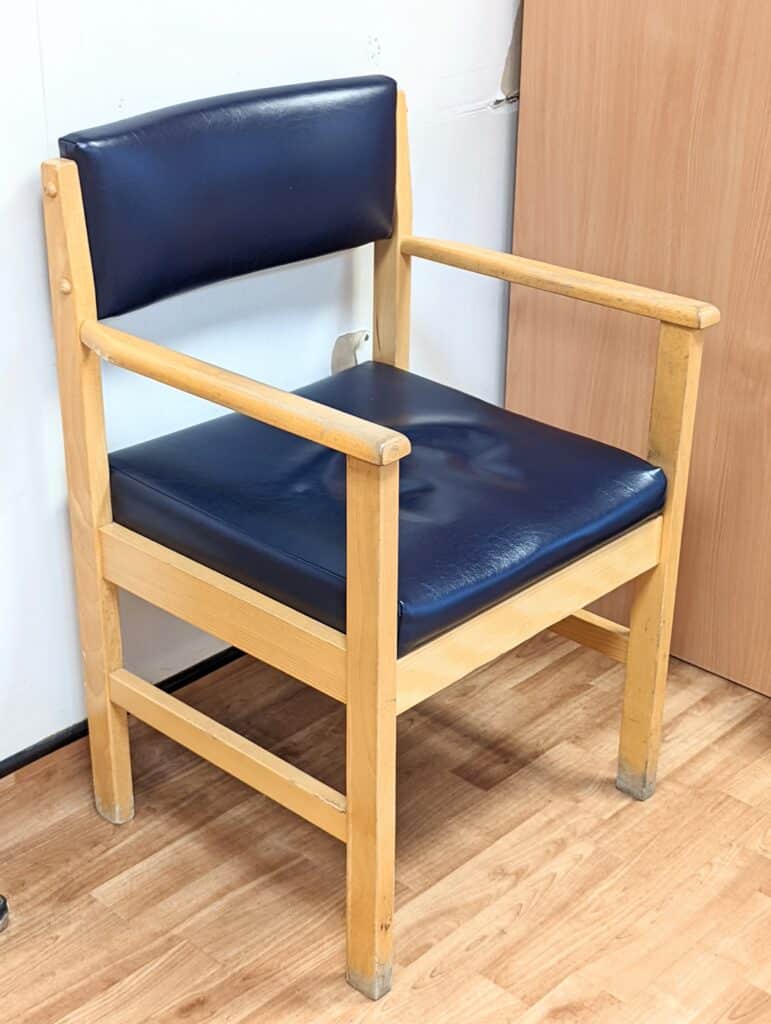
Of all the furniture pieces ever made, chairs are without doubt the most abused. Designing chairs that hold up to the rigours of daily, family life can be a challenge to any furniture maker-designer. Not only do the woods impact the design options, so too does the joinery, the intended use and the unknown possibilities of diverse misuse. Chairs get stood on, scooted fully weighted in many different directions, rocked on from side to side, tilted back on onto the two rear legs and even just one leg from time to time. Dead-square, blocky chairs with no tapers, a larger than average footprint and lots of rails mortise and tenoned well produces a long-lasting piece to sit on. The problems with such chairs are manifold, but two alone come immediately to mind; they take up too much space, and they are usually very ugly. In my design brief, I tackled the issues I feel are important. The chair must be a safe design for adults and children, compact enough to seat three on each side of my new dining table where three of them will fit readily between the table legs, solid enough to last for decades up to a century, lightweight enough to move singlehandedly by a lightweight, non-muscular person. I want my three-year-old granddaughter to be able to slide one across the kitchen floor, kneel on the chair facing the back without it tipping in any direction, things like this. We’ll see! The other element I always want is shouldered mortise and tenon joinery throughout the main frame. I am fairly settled on my design now. And I am currently bringing all of the components together piece by piece.
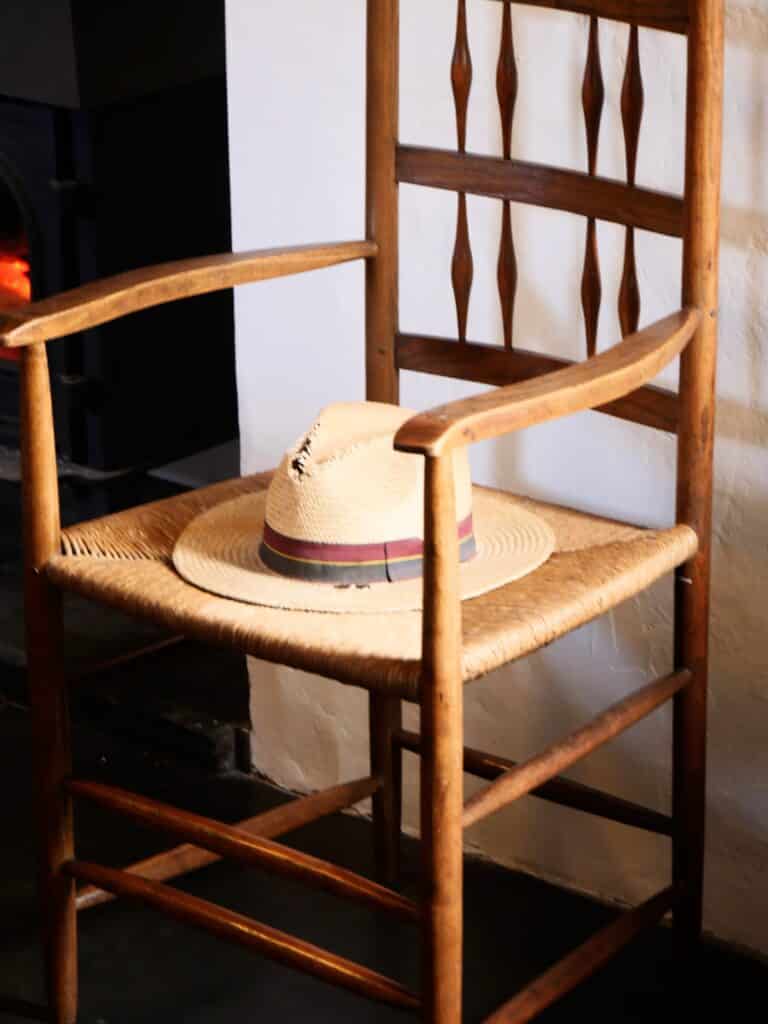
My design has one complicated mortise and tenon joint that also leads to a complicated glue-up. In both complications I resolve the problems in a spilt-second thought that worked perfectly first time, saving me a lot of time and heartache. Tonight the chair is all together apart from the chair back which io want to get right. The chair seat is different. I reduced the weight of the chair by my choice of slatting the seat. It’s an unusual chair, a mix of tradition and simplicity I looked for and got, I think.

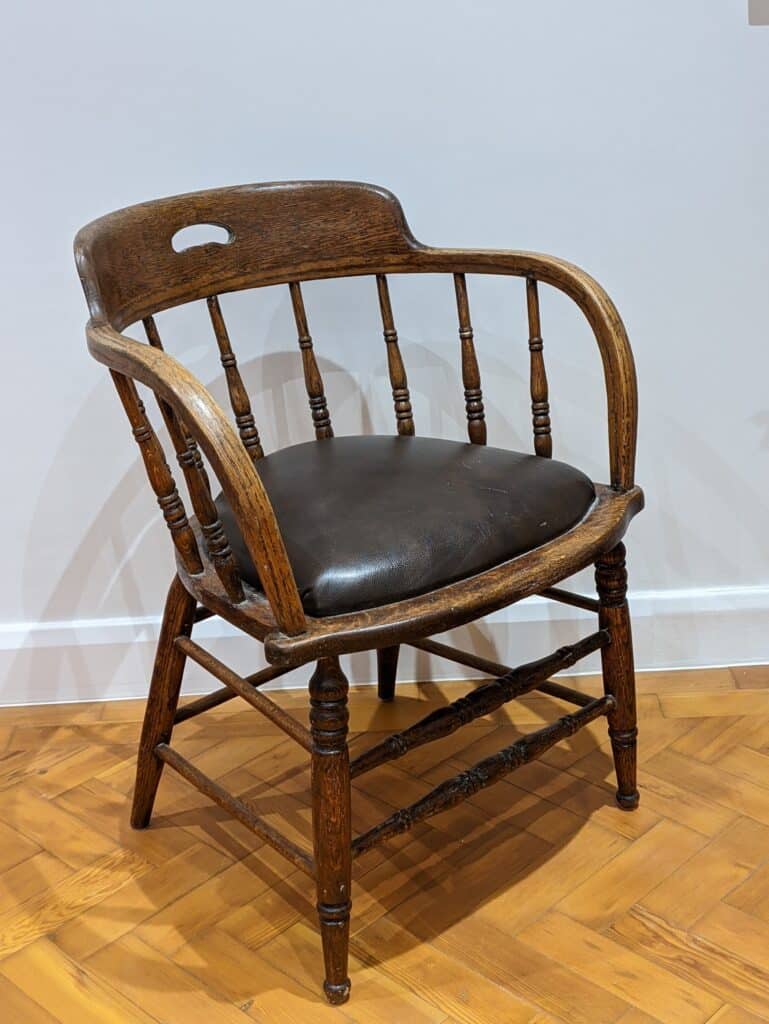
My chair here cost me a pound at an auction room and is extremely lightweight to lift and carry and is amazingly strong after a hundred years of daily use.
My chair started like this with components super-glued and screwed in place . . .
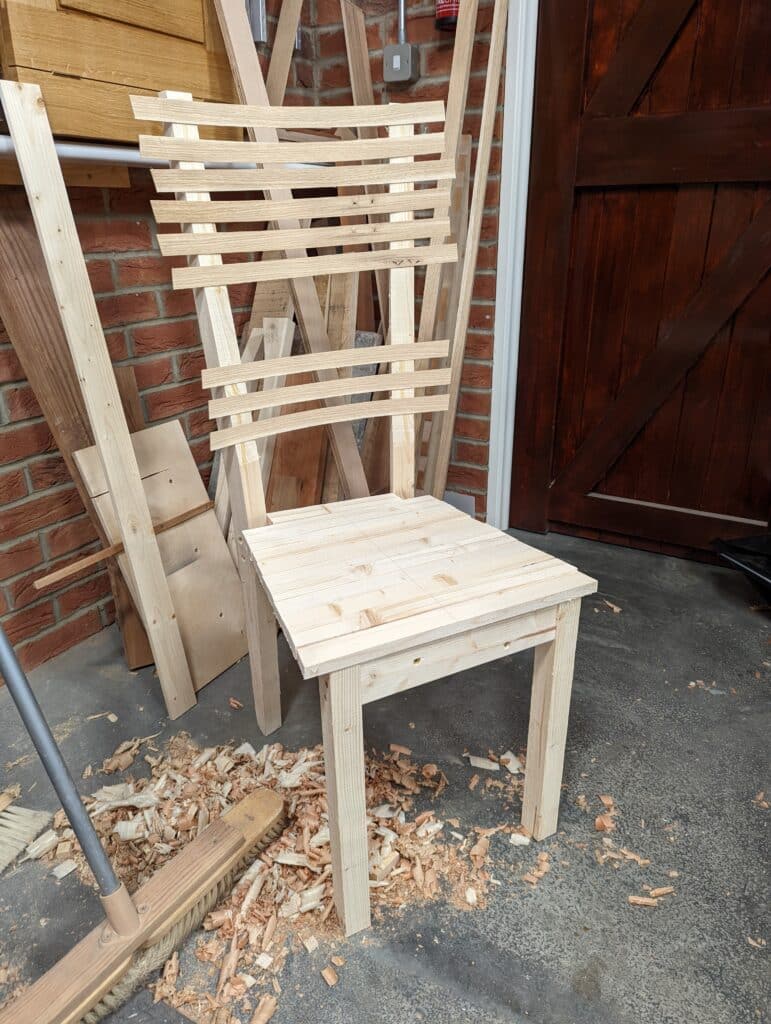
. . . so in the next two days we begin filming the chairmaking section of Sellers’ home dining chairs to following from the dining table series we just finished. I am happy to have a new design come together. What’s next?
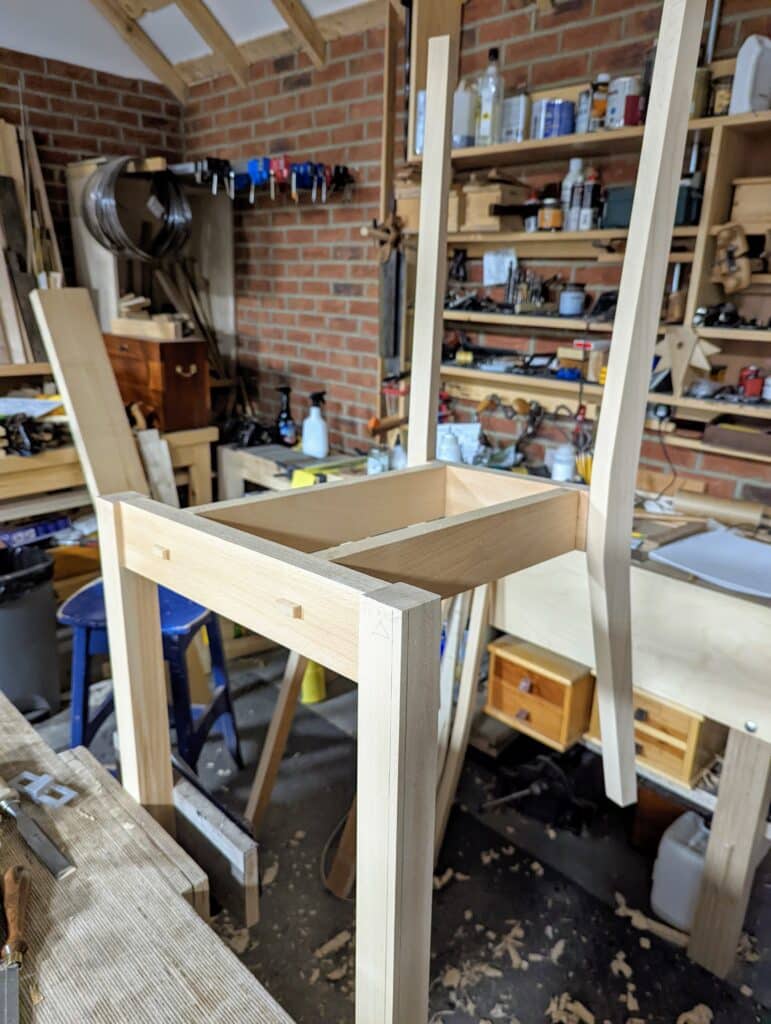


Very exciting and I’m looking forward to it! I have a chair from just after the US Civil War that I’m going to take apart in order to understand how it was built as it is of a kind that I do not see any more and have never seen anyone describe how to build. I’m attracted to its lightness (aesthetically and physically). On a different topic, just in case it helps others: I recently prototyped a chair using construction lumber and pocket screws. I wasn’t sure if the pocket screws would be strong enough, but they have proven plenty strong for prototyping and saved me a lot of time…just a bunch of butt joints.
The best teacher ever is the dismantling of furniture pieces to discover the legacy left by the maker of it. I think that you will enjoy that, Ed. John here dismantled a table recently that was held together along the joint lines with screws hidden along the length. These predated pocket hole construction by 80 years and had slot-headed screws of steel that had rusted in. He had a lot of trouble dismantling the piece for the wood.
My Sympathies to John. I dismantled my oak refractory table thinking it was a simple edge joint only to discover no.12 steel screws in slotted hole joint design. Simple and clever. Keep up the good work.
I would also wager that your prototype is more durable than most commercially sourced chairs hat are made with dowels and glue.
(blasted spell check….turns ‘that’ into ‘hat,’ and that hat into a cat.)
It’s interesting to see that you’ve opted for a flat bed as the actual seat base. A few years ago I stayed in a Landmark Trust property in Yorkshire, and the dining table and chairs were antiques in a simple generic style with a flat seat and almost straight backs. What surprised me was how comfortable they were to sit on for extended periods of time.
The only real difference between your design as shown above, and those I described was the back was more straight and had three cross pieces. The legs and frame were similar, although thinner as they’d used oak, and had stretchers half way down between the seat and the foot of the legs. The seat itself was quite thin oak, no more than 1/4″ thick. The seats were all jointed and pegged, with no evidence of screws or nails.
These simple chairs were clearly from the 19th century, plain yet elegant. They were just as strong and as comfortable as when they’d been made. I ended up taking measurements, photographs and sketches as I liked the look so much.
The seat is actually still a hidden concept element to the chair design and I reserve it for the surprise element. The spruce stud version is literally a placeholder and not the chair. This is an evolving concept as an instruction in the video of how to develop an idea from concept to execution.
1. “A health-centre waiting room chair does not get more typically square and blocky and utilitarian than this one.”
From time to time I go listen to an organ concert. Organs are generally in churches.
They have the worst uncomfortable chairs existing; even more square and blocky than the one you show.
2. The design shown in the last picture is very interesting.
It avoids the difficulty of having two rails meeting together in the feet.
It makes it stronger and easier to do.
3. will the front/back rails be in housing on the final model (like you did for the back of the workbench drawer)?
I think church chairs (and pews) are deliberately uncomfortable, aren’t they? To prevent you nodding off during the sermon…
I’m guessing this to be some kind of passive-aggressive answer, like jokes about a colleague by someone who appears as everyone’s friend and the funny man in the office in front of everyone. This one being directed at church attendees and such. They appear to be a joke but are put out about the butt of the joke to put him or her down so that everyone working with him or her starts joking about him or her?
Hi Paul, not at all. It wasn’t really even a joke. I was pointing out that sometimes furniture (and other things) can be designed with goals other than comfort in mind, and I think in some instances discomfort could either be a deliberate design choice or at least a side effect of the rest of the design that the designer didn’t think was important enough to address. High heeled shoes probably fit the “uncomfortable by accident” category whereas those park benches that are designed with handrails placed to stop people from sleeping on them most definitely fit into the “deliberately uncomfortable” category.
Good comment.
I definitely understand what you’re trying to say about the church pews. My backside tells me comfort would have have been one of the last design considerations.
I doubt that that is true for most, Aaron, perhaps you have a particular weakness, I don’t know. Many of the comments made make me realise just what kind of a generation we have become today where everything revolves around zero tolerance of the most minor of minor discomforts and restrictions.
On rare occasions I have encountered church pews that were actually comfortable without cushions. It seems to require an uncommon knowledge to get right but it can be done.
I’ve heard that restaurant chairs are made deliberately uncomfortable so that customers will leave after about 45 minutes (time enough for a customer can order and eat a meal). The chair should get progressively more uncomfortable after 45 min so the customer WILL leave.
I confess that I have no idea how to accomplish such a goal. I would consider that an extremely talented designer.
This gets more silly. I think no one really studies restaurant and cafe chairs. Some of the most amazing chairs have been designed for comfort in its diverse ways and specifically for the rigors of cafe use. No designer in the world is being paid to design an uncomfortable chair that provides comfort for 45 minutes. Name your source. Let’s track this false information down!
I have no source. I heard it once, somewhere, and have repeated it as gospel since.
That is why I have no idea as to how to accomplish such a goal.
If you want to see an example of a hard, but comfortable seat, just look at the steel seats on old farm equipment. Just as hard as can be, but comfortable to sit on for a days work.
Putting padding on a board is easy to do, but it doesn’t always make for comfort.
Was the “electric chair” built for comfort….its user didn’t have a choice
Hi Sylvain & Tom,
If you ever attend an organ recital or similar event in a church, I would recommend finding a kneeler and using it as a cushion to sit on the floor – far more comfortable than a pew!
It is not just church seating which is designed to be uncomfortable! One important factor in the profitability of restaurants is the number of times the restaurant can ‘”turn over its covers”. The most common way to get patrons away from the dining table after they finish eating is an uncomfortable chair. As soon as customers have vacated a table, another group of diners can be served there.
My favourite restaurant has a world-class view through a huge panoramic window, deep carpet and wall coverings to soften the acoustics and fantastic comfortable deeply padded chairs. The restaurant does ‘not turn its covers’ at lunch time – so patrons can linger over the excellent food for as long as they like – often for 2 or 3 hours! Compare that with most restaurants and also with the fast-food restaurant chains and you begin to realise the science and economics involved in such seating. In my opinion, uncomfortable restaurant seating is only slightly more subtle than using cattle prods to encourage the prompt departure of patrons!
How about we look at this differently, just a bit. Church seats and buildings are not nor were they ever designed with intentional discomfort to their church members in mind but to accommodate as many people within the church for meetings as possible. And most cafe seats and conditions will be the same too. I would also say this though, most people today expect perfect comfort and space even when they do not pay for such. I have never been charged by any church or place of faith for the seats I sit on. Any cafe I go into seems content for me too be there for at least a couple of hours. I realise that that might be different from cafe to cafe but why would anyone expect to remain in a cafe for free for longer than it takes to drink their coffee or eat their meal? Could it be that it’s more a selfish and self-centred condition to expect free parking space in a cafe just because people also expect free internet and this is the new generation that expects it?
Cafes have always been places where people would go and hang around. That’s what a cafe is, not a drinks dispenser. If you are expected to not stay any longer than it takes you to have your drink that’s sad, and it is a bad cafe
You’re not saying anything we don’t already know. It goes without saying that we enjoy a drink and company, an hour is good, possibly two. I often stay for two, but if a cafe owner had a mass of company queuing for lunch and no seats I would be sympathetic to the needs of others, that’s all. I was more challenging the idea that cafes supply free internet for a single cup of coffee or that they made their seats uncomfortable for customers so that they would get up and go quicker. I think that all that was clear enough.
Starbucks is based on the meeting place concept. People have business meetings work on their computers and homeless get shelter
seating varies in comfort and design
I’m OK with not-too-comfortable chairs in a restaurant. I can wiggle around and change position. What drives me bonkers is the grossly overloud “music” that really isn’t music; it’s racket. And that requires guests to yell at each other in order to be heard. That does drive me out quickly (as the owner planned) but never to return again which is a downside the owner won’t recognize if the law of supply and demand favors him.
Good Morning Paul ,
Interesting Blog on chair styles and highlights why so many books and articles are written on this subject . I appreciate your disciplined approach of preparing a thoughtful design brief , and focusing on developing a design that meets the need . I look forward to the dining chair build .
I hope there is an opportunity in the future for you to demonstrate the build of a classic Welsh / Windsor Stick chair for some other spot in the Sellers Home buildout . regards , Peter
Have a search for Michael Dunbar. A US maker who has done it for most of his life.
The first chair shown, with the almost lacy looking back and graceful legs blows my socks off! Can’t wait to see what you come up with for Sellers home.
While I agree this chair’s design is very light and elegant, I can see a potential problem of the front legs breaking in use. Careful consideration is required with the selection of timber and grain direction when making this style of leg. Maybe less so with the chair in the second picture, but still something to consider.
I’ve repaired several commercially made chairs with broken legs or backs because they were cut from a template with little or no thought given to the grain direction, which had weakness from short grain or knots.
That’s not quite true at all, Peter. I try to be very careful not to describe a flawed item, tool, design, etc positively, as I did with the chair if it has any weakness or flaw. What you cite as faults is erroneous by your stating, “I can see a potential problem of the front legs breaking in use.“. No such thing exists anywhere in the whole well-thought-through design as all of the bent parts, that’s the majority of all of them including the legs are evidently steam-bent for continuous grain runs throughout each stem and stick, this inclusion then gives the same strength as it would have if it were not bent but straight and upright — a perfect solution by a wonderful crafting artisan who knew his stuff and did indeed give “careful consideration” to the whole chair and especially the front legs. There was nothing about this chair that was “commercially-made” which is quite, quite obvious and so in no way could anyone consider this to be mass-made in any way, hence its hundred years in use. To suggest otherwise is simply a fallacy I’m afraid, Peter.
Paul, Now I know the front legs are steam bent, I agree that they are more than up to the task and would last a lifetime.
My comment was directed at commercially made chairs which often have production shortcuts, such as making the legs from a template cut from a slab 25mm or so thick with little regard to the grain direction. Steam bending would be far to expensive for them to do.
The things I like about the chairs are very simple and sleek! They will inspire me to creating something like this! Thanks for sharing.
It is interesting to watch the ‘Inside the factory’ episode made at the Ercol factory. Chairs made by a combination of CNC machines and hand work. The episode is from series 6 and should be on iplayer for those from the UK.
I saw that episode. The presenter referred to the “craftsmanship” on show. Well, I struggled to see any. The only handwork I recall was a guy wielding a big mallet to bash battens into a former for steam bending, and another guy doing a bit of sanding on a belt sander. All the “clever stuff” was done by CNC machines – I don’t recall seeing a single joint being hand-crafted. But that of course is how they can produce large volumes at a price most people expect to pay. Sad, but a fact of life.
I think I know the word for type of build: “Dustmanship”.
Sorry for the point 1. of my comment.
Hi Paul,
That first chair is stunning. I have two questions:
1. Do you recall how the legs were joined to the seat frame? Were they wedged thru tennons or blind sockets?
2. Is the seat fabric or hickory bark?